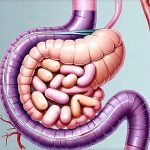Nausea and gut flare-ups are incredibly disruptive experiences. They can strike seemingly out of nowhere, turning even simple tasks into monumental challenges. Beyond the immediate discomfort, there’s often anxiety about what you can eat, a fear of making things worse, and a desperate need for gentle nourishment. Many people find themselves scrambling to find something – anything – that won’t trigger more distress when these episodes hit. This is where having a thoughtfully curated pantry becomes invaluable. It’s not just about stocking up on long-lasting foods; it’s about proactively preparing for those days when your digestive system needs extra support and gentle, easily digestible options are paramount.
A well-equipped “comfort food” pantry isn’t about indulging cravings during illness – it’s about having readily available resources that minimize discomfort and provide essential nutrients without exacerbating symptoms. It’s a proactive approach to self-care, acknowledging that these episodes happen and equipping yourself to navigate them with greater ease. This means prioritizing foods known for being gentle on the stomach, easy to digest, and capable of providing some level of sustained energy even when appetite is significantly reduced. Building this pantry isn’t about restriction or deprivation; it’s about empowerment and taking control during a vulnerable time.
The BRAT Diet & Beyond: Foundational Pantry Items
The “BRAT diet” – Bananas, Rice, Applesauce, Toast – has long been a go-to recommendation for managing nausea and diarrhea, and for good reason. These foods are bland, low in fiber, and easy to digest, making them less likely to irritate a sensitive digestive system. However, relying solely on BRAT can lead to nutritional deficiencies if prolonged, so expanding beyond this framework is crucial. A truly supportive pantry includes options that provide broader nutrient support while still being gentle. Rice (especially white rice) should be a staple, along with well-cooked oatmeal – avoid high-fiber versions during acute flare-ups. Bananas are excellent sources of potassium, often depleted during vomiting or diarrhea. Applesauce (unsweetened is best) provides some fiber and hydration. Toast, ideally made from white bread, offers simple carbohydrates for energy.
Beyond the core BRAT foods, consider adding:
– Plain crackers (saltines, Ritz – although be mindful of sodium if you’re sensitive)
– Clear broths (chicken or vegetable – low sodium options are preferable)
– Herbal teas (ginger, peppermint, chamomile – these can soothe nausea and aid digestion)
– Unsweetened applesauce variations (pear or peach are good alternatives)
– Potatoes (mashed, boiled, or baked – avoid fried preparations)
These items offer a range of textures and flavors while remaining relatively easy on the stomach. The goal is to provide sustenance without overwhelming your digestive system. Prioritize simplicity and minimize ingredients. Complex meals with lots of spices or fats should be avoided when experiencing nausea or gut issues. Hydration is also key – keep plenty of water, electrolyte solutions (pedialyte, oral rehydration salts), and herbal teas readily available. If you are dealing with recurring issues, consider looking at best breakfast options to start your day gently.
Gentle Protein & Sustained Energy Sources
While the BRAT diet focuses on carbohydrates, incorporating gentle protein sources is important for maintaining strength and aiding recovery. During nausea or gut flare-ups, appetite often diminishes drastically, making it challenging to consume enough calories. Protein helps stabilize blood sugar levels and provides essential amino acids needed for healing. However, not all proteins are created equal when your system is compromised. Avoid fatty meats, fried foods, and heavily seasoned options.
Excellent choices include:
– Plain Greek yogurt (small amounts – lactose intolerance can be exacerbated during flare-ups, so start with a small test portion)
– Boiled or poached chicken breast (skinless, unseasoned)
– Eggs (scrambled or hard-boiled – avoid frying)
– Tofu (soft or silken – prepared simply without strong flavors)
These options are easily digestible and provide a good source of protein without being overly taxing on the digestive system. Small, frequent meals are often better tolerated than large ones when experiencing nausea. Think about portioning out these protein sources into manageable amounts throughout the day. Sustained energy is also important. While sugary snacks might offer a temporary boost, they can quickly lead to blood sugar crashes and exacerbate symptoms. Complex carbohydrates like white rice or well-cooked oatmeal provide more stable energy levels. It’s also helpful to understand how to tell if nausea stems from gut issues vs. nerves.
Soothing Teas & Digestive Aids
Herbal teas are an often underestimated but incredibly valuable addition to any emergency nausea pantry. Ginger tea is renowned for its anti-nausea properties, working by helping to speed up gastric emptying and reduce inflammation in the gut. Peppermint tea can soothe muscle spasms in the digestive tract, alleviating bloating and discomfort. Chamomile tea has calming effects that can help reduce anxiety, which often accompanies nausea. It’s important to choose pure herbal teas without added sugars or artificial ingredients. Brewing a cup of warm (not hot) tea can be incredibly comforting during episodes of nausea.
Beyond teas, consider these digestive aids:
– Ginger chews or candies (in moderation – too much ginger can sometimes worsen symptoms)
– Peppermint oil capsules (use with caution and follow dosage instructions carefully – peppermint can relax the lower esophageal sphincter, potentially leading to heartburn in some individuals)
– Activated charcoal tablets (may help absorb toxins during diarrhea, but consult a healthcare professional before use as it can interfere with medication absorption.)
These aids should be used as complementary therapies alongside dietary adjustments. They are not replacements for medical attention if symptoms are severe or prolonged. Always read labels carefully and be mindful of potential interactions with any medications you’re taking. If stress is a factor, consider step-by-step strategies to manage it.
Hydration Hacks & Electrolyte Replenishment
Dehydration is a common consequence of vomiting and diarrhea, making it crucial to prioritize fluid intake. Water is essential, but sometimes difficult to keep down during nausea. Sip small amounts frequently rather than trying to gulp large quantities. Herbal teas can contribute to hydration while offering soothing properties. Electrolyte solutions (pedialyte, oral rehydration salts) are vital for replenishing lost minerals like sodium, potassium, and chloride, which are depleted through vomiting and diarrhea.
Creative hydration hacks include:
– Frozen fruit popsicles (made with unsweetened juice or herbal tea – avoid citrus fruits if you’re sensitive)
– Coconut water (naturally contains electrolytes but can be a mild laxative for some)
– Clear vegetable broth (provides both fluids and essential minerals)
Avoid sugary drinks like soda, which can worsen dehydration. If you struggle to keep liquids down, try sucking on ice chips. Recognizing the signs of dehydration – dizziness, fatigue, dark urine, decreased urination – is important. If you suspect severe dehydration, seek medical attention immediately. Maintaining adequate hydration is not just about relieving symptoms; it’s essential for supporting your body’s recovery process. You can also find best pantry staples to help manage acid spikes that contribute to digestive discomfort.
Managing Flavor & Texture Sensitivities
Nausea often comes with heightened sensitivity to smells and flavors. Foods that are typically enjoyable can become repulsive during a flare-up. This is why bland, simple foods are generally recommended. However, even within the realm of blandness, textures can play a significant role. Some individuals find smooth textures more tolerable than crunchy ones, while others prefer dry foods over moist ones. Understanding your personal preferences and sensitivities is key.
Consider these strategies:
– Experiment with different preparations of the same food (e.g., mashed potatoes versus boiled potatoes).
– Offer small portions of various options to see what you can tolerate.
– Avoid strong smells – open a window for ventilation or use an air purifier.
– Keep foods at room temperature or slightly warmed, as extreme temperatures can sometimes exacerbate nausea.
It’s also helpful to identify any specific food triggers that consistently worsen your symptoms and avoid them during flare-ups. This might require some self-observation and experimentation. Don’t be afraid to adjust your diet based on what feels best for your body. Remember, the goal is not to force yourself to eat anything; it’s to find gentle nourishment that supports recovery without causing further distress. If nausea lingers, consider what to do when it lasts.


















